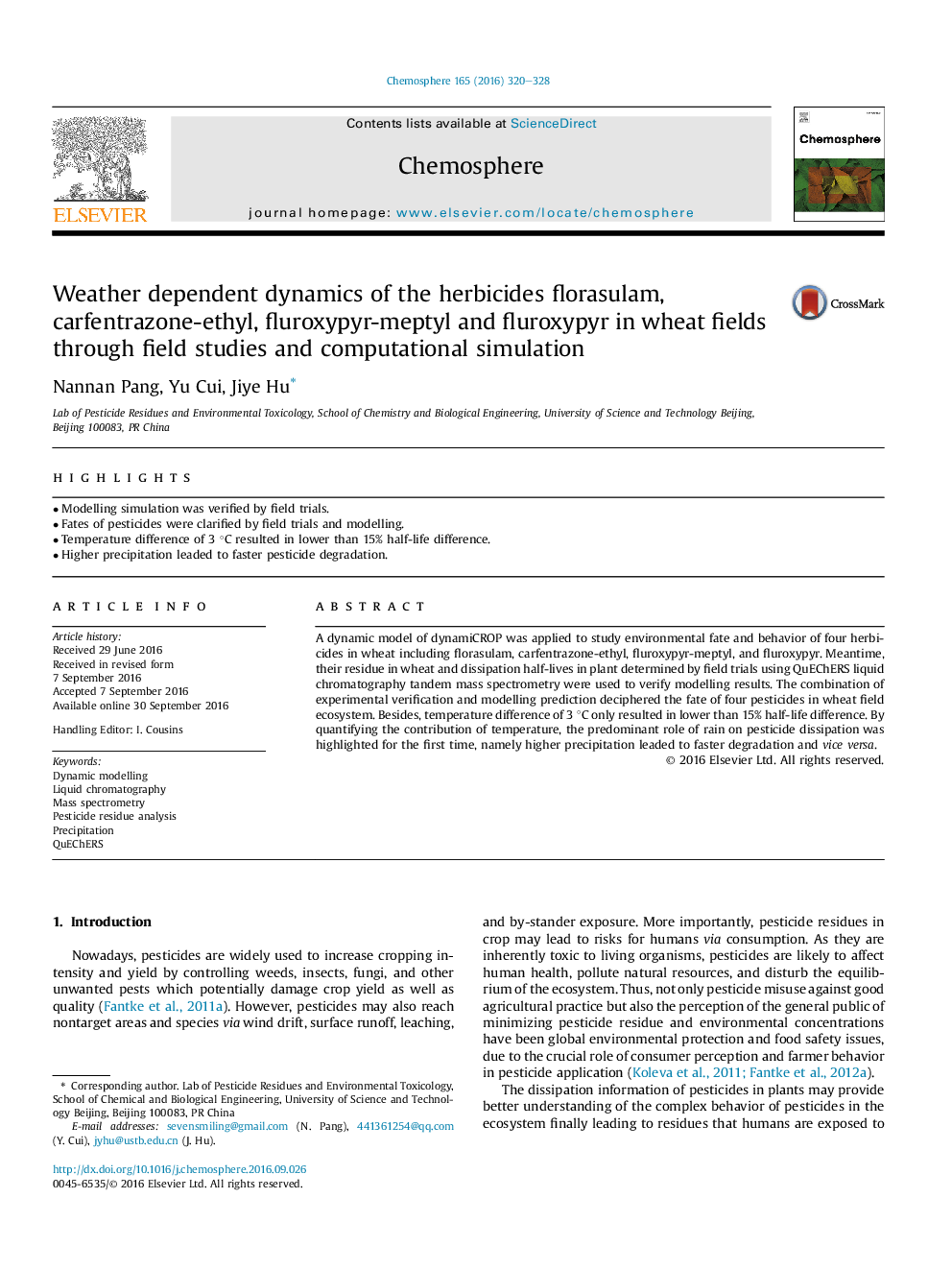| Article ID | Journal | Published Year | Pages | File Type |
|---|---|---|---|---|
| 4407301 | Chemosphere | 2016 | 9 Pages |
•Modelling simulation was verified by field trials.•Fates of pesticides were clarified by field trials and modelling.•Temperature difference of 3 °C resulted in lower than 15% half-life difference.•Higher precipitation leaded to faster pesticide degradation.
A dynamic model of dynamiCROP was applied to study environmental fate and behavior of four herbicides in wheat including florasulam, carfentrazone-ethyl, fluroxypyr-meptyl, and fluroxypyr. Meantime, their residue in wheat and dissipation half-lives in plant determined by field trials using QuEChERS liquid chromatography tandem mass spectrometry were used to verify modelling results. The combination of experimental verification and modelling prediction deciphered the fate of four pesticides in wheat field ecosystem. Besides, temperature difference of 3 °C only resulted in lower than 15% half-life difference. By quantifying the contribution of temperature, the predominant role of rain on pesticide dissipation was highlighted for the first time, namely higher precipitation leaded to faster degradation and vice versa.
